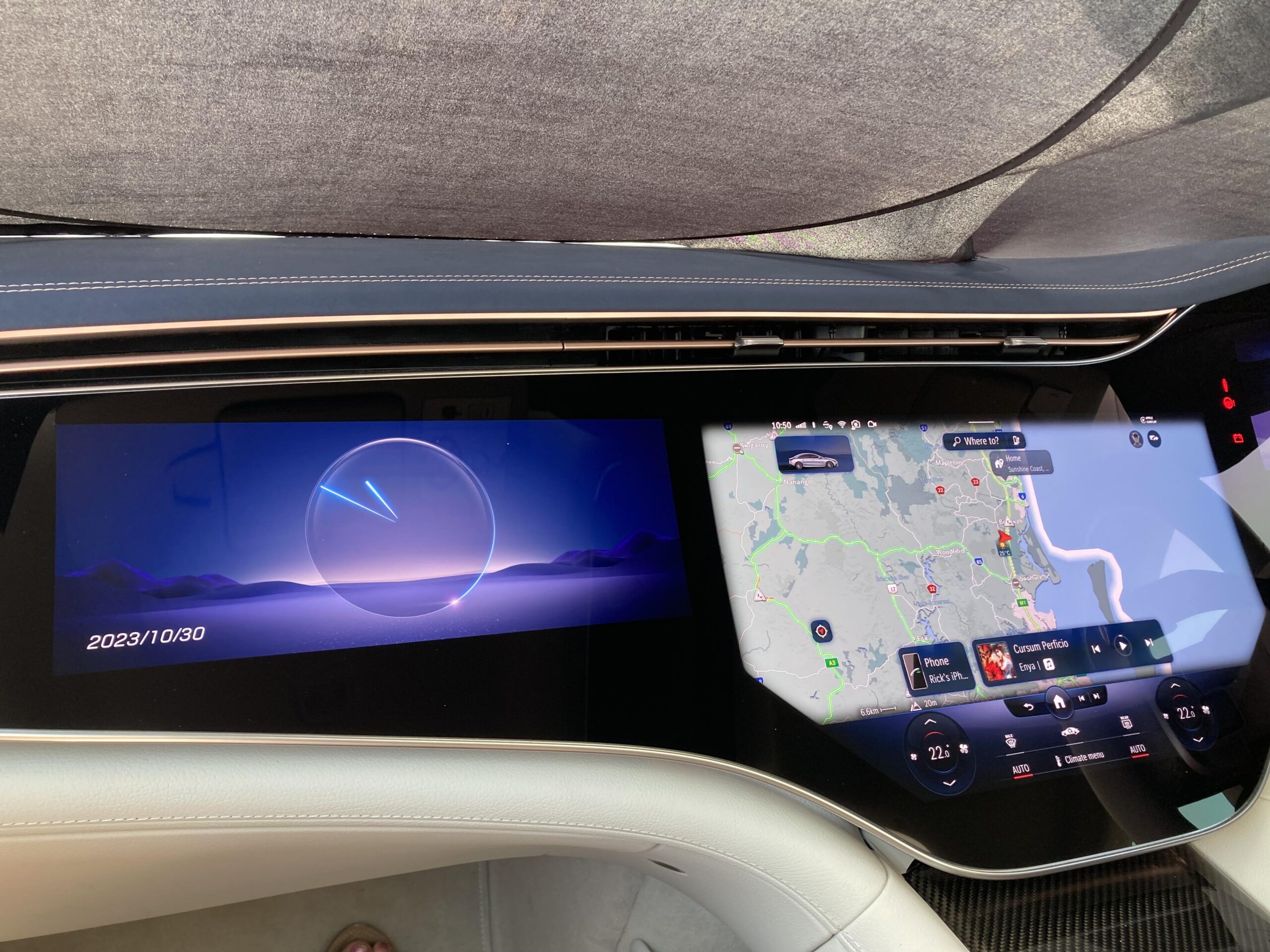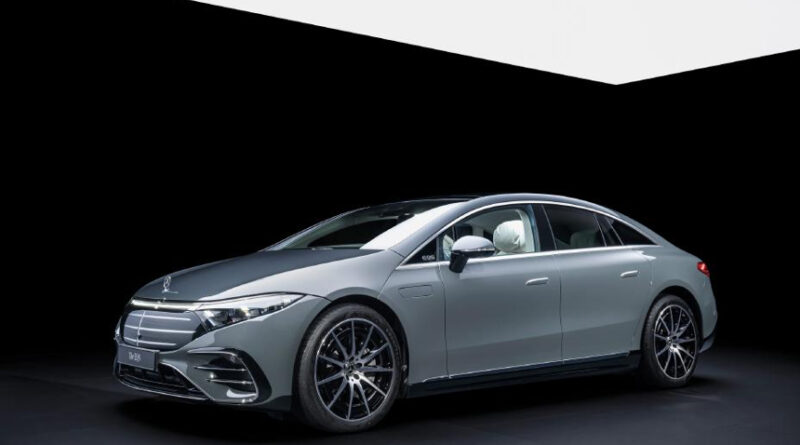Mercedes Tweaks The EQS By Adding A Larger Battery & A Star On The Hood
When is a car not a car? When it is a Mercedes — one of the most well-known brands in the world. Mercedes is more than a car; it is a symbol that suggests those inside are deserving of special recognition for their refinement, discernment, and abundance of disposable income.
The Mercedes EQS battery-electric sedan debuted three years ago with a lower price than the S Class sedan and about 430 miles of range (WLTP). Typically, cars have a 7-year design cycle, which means the EQS is due for its second generation introduction in about 4 years. It is not unusual for it to get updated midway through the design cycle, and in fact the company has just announced new improvements to the car — some minor and some significant.

Rear seat passengers can now recline up to 38 degrees — two more than before — and experience the sybaritic joy of a heated massage. The full-width MBUX Hyperscreen that spans the entire dashboard from door to door is now standard on all EQS sedans. Outside, the company has seen fit to reproduce the appearance of a traditional front grille. Apparently Mercedes customers prefer that to the original design which was clean and modern and helped the car achieve an extraordinarily low Cd of just 0.20. By comparison, the sleek Lucid Air has a Cd of 0.21 and the Tesla Model S has a Cd of 0.208.
More important by far is the addition of the traditional Mercedes three-pointed star mounted prominently on the hood. That may seem a bit of foolishness to some, but we know of people who traded a Mercedes for a BMW, Audi, or Lexus who later switched back to a Mercedes just because seeing that star on the hood made them feel they were driving something special — and let others know it as well.
Mercedes EQS Technical Upgrades
The most prominent upgrade is an increase in the size of the battery from 108 kWh to 118 kWh. According to Autocar, that helps boost range by 11%, so the dual motor EQS 450 4Matic now offers 496 miles, up from 445 miles, while the single motor 450+ now offers up to 511 miles of range. Those figures are WLTP. The US EPA range estimates are 340 miles and 352 miles, respectively. Increase them by 11% to get an idea what the 2025 EQS will be capable of when it arrives in America near the end of 2024. The bigger battery features revised cells and battery chemistry, Mercedes says, without offering further details.
A battery upgrade is not the only thing responsible for the extended range estimates. All version of the EQS now use a heat pump system that is more efficient and scavenges heat from the drivetrain and traction battery. In addition, the front motor on dual motor models can be disconnected when not in use to eke out a little more efficiency. Finally, the level of regenerative braking has been doubled from 1.5/m per second to 3/m per second. Since that change will mean the mechanical brakes won’t be used as frequently, Mercedes has devised a system to pump the brakes on occasion to keep all the moving parts in working order.
Meanwhile, both the EQS and EQE sedans will have their towing capacity increased from 750 to 1700 kg (3750 lb), bringing them in line with their SUV siblings. Mercedes has also upgraded the Automatic Lane Change Level 2 driver assistance feature, although this will only work on certain highways. The last bit of good news is that prices for the EQS will remain the same despite the improvements. Mercedes says all other models based on the EVA 2 fully electric architectures, such as the EQS SUV, EQE sedan, and EQE SUV, will also benefit from many of these improvements.
The Takeaway
My colleague Tina Casey did a report recently on a study that predicts continuous improvements in vehicle range as engineers figure out new and better way to make batteries, inverters, electric motors, and such. The upgrades to the Mercedes EQS are proof that prediction is accurate. We can hardly wait to see what new wonders the EV revolution has in store.
Have a tip for CleanTechnica? Want to advertise? Want to suggest a guest for our CleanTech Talk podcast? Contact us here.
Sign up for our daily newsletter for 15 new cleantech stories a day. Or sign up for our weekly one if daily is too frequent.
CleanTechnica uses affiliate links. See our policy here.
CleanTechnica's Comment Policy

